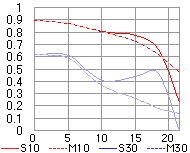Background and Development History Nikon earliest attempt to introduce a wideangle zoom lens was a non-Ai MF Zoom Nikkor 28-45mm f/4.5 back in 1975. It was used to be the world's widest zoom lens for 35mm photography at the time of its introduction. Three years later, Nikon has, again managed to break another technological barrier of wideangle range in a zoom lens approaching 24mm ultra-wideangle with their MF Zoom Nikkor 25-50mm f/4.0 in 1979 with a raw Ai-lens spec. It was interesting to note that all these early Nikkor zoom lens design bear with a constant aperture.
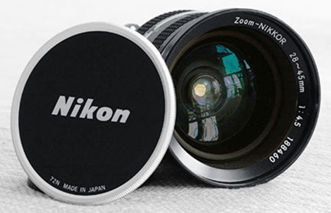 |
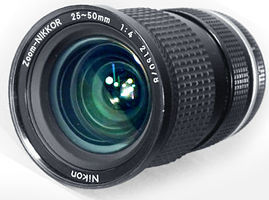 |
The extended wideangle range as well as high optical quality of these original Nikkor zoom lenses has helped a great deal to illustrate the convenience and strength of zoom lenses for some specific usage such as on press, location shooting, travel and photojournalism photography. |
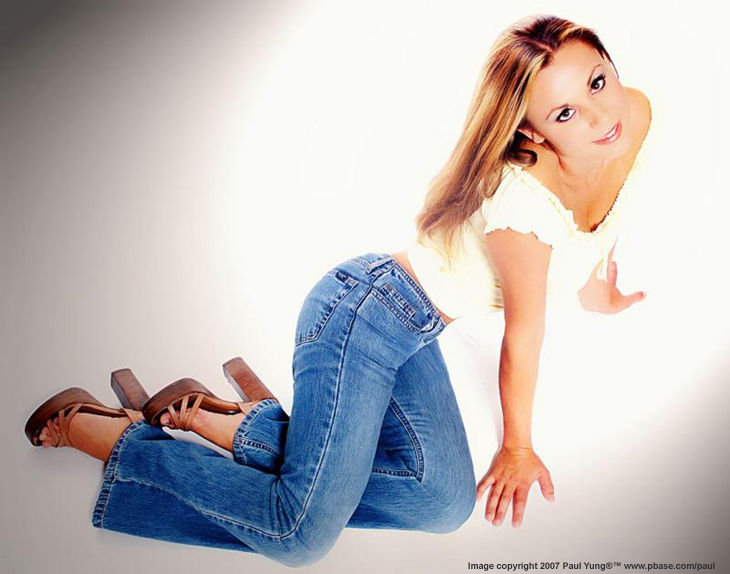 |
Excellent picture coverage makes the lens suitable for a wide variety of applications, which includes indoor studio as demonstrated by Paul Yung from US. |
Dear Paul Pbase has limted my mail exchange as I am not a member and I can't reply / convey my appreciation for your contribution to this site: Thanks pal. You have a lovely portfolio. By the way, this picture is cool.. http://www.pbase.com/paul/image/24310319
What lens do you use ? May be I can include this as well for the related section. When I get 60% right for the AF Nikkor, I will move back to continue the Canon EF: http://www.mir.com.my/rb/photography/hardwares/classics/eos/EF-lenses/index.htm I do notice you use both Canon and Nikon and may prove to be a good source for me to acquire illustrative photos for the pages. Sorry if this has sounded too greedy..but I 'd to share via a common medium. You can reply using my personal mail leofoo(AT)mir.com.my - As soon as you have read this, please revert to me as I have to delete this public message -
Nikon Autofocus (AF)
Zoom Nikkor 24-50mm f/3.3~4.5s ultra wideangle-standard zoom lens
Marketed 1987; Discontinued: 1994
I do know Nikon has released quite a number of other wideangle zoom lenses over the years, but at this chapter I am confining the discussion on the ultra-wide to standard zoom range. The autofocus zoom Nikkor 24-50mm f/3.3~4.5s was released barely a year after Nikon has switched to kick start the autofocus era and filled the vacuum with a lack of a zoom lens type extending to ultrawideangle range (The widest picture angle for a zoom lens among the original release of AF Nikkor lens group in 1986 was AF Nikkor 28-85mm f/3.5-4.5s). In a way, the AF Zoom Nikkor 24-50mm was an important component in the Nikkor zoom lens family as the next ultra-wideangle zoom lens was only being released a decade later in 1996 (AF Zoom Nikkor 24-120mm f/ 3.5~5.6D IF). Although with a 2X zoom ratio but as the lens has some of the most frequently used focal length of 24mm, 28mm, 35mm and 50mm and has served many Nikon photographers needs over the years due to its versatile picture angles.
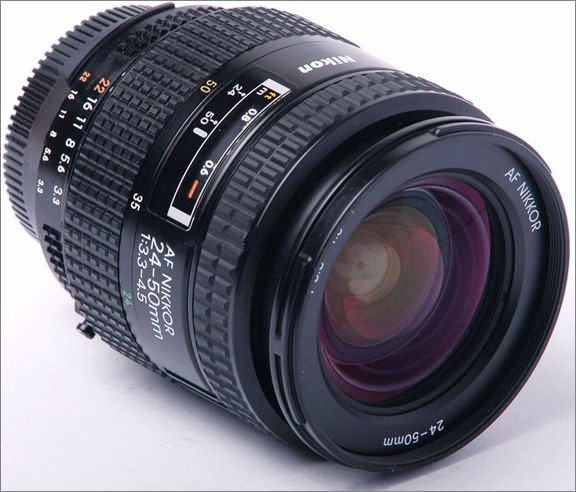 |
Compared with some of the original batch of AF Nikkor lenses, this is a pretty well made zoom lens and has patched some of the complaints Nikon photographers had. It uses a rotating zoom design with a distance scale display window and an improved manual focusing ring at the furthest end (as compared to the weak design deployed on the first generation AF Nikkor). So, when user switches to manual focusing, it provides a more positive and gripable MF operation. Both the zoom ring and the manual focusing ring has a different grip / feel with the hard rubberized covered pattern and further assisted with a space in between with the distance display scales window on a fixed lens tube, you will never get mixed up even with your eyes constantly leeching to the viewfinder for photo composition. |
This original version of this AF Zoom Nikkor 24-50mm has an older minimum lock in twist-knob design which is different from the AF-D version which uses a slide switch but this is not an important feature as it is only served to prevent accidental switch of aperture when using programmed AE and Shutter Priority AE mode. For Aperture Priority AE and/or Manual Exposure control, simply depress the knob and twist to release. The three most used focal length indicative settings of 24mm (green), 35mm (white) and 50mm (yellow) were marked at the zoom ring. Similarly, the lens has two indexes for zoom index and each being colored. There are also two infra compensation indexes for 24mm and 50mm each being positioned near the focusing index near the distance scales display window but I feel lack a colored depth of field index lines for variable zoom settings is more desirable fro photographers. The filter attachment size is 62mm, making it easier to share with other easily available system filter accessories. Besides, the front filter does not rotate and making use of special filter accessories more friendly to operate. Nikon has also designed a bayonet lens hood HB-3 for this lens (I notice some photographers uses alternate HN-26 but avoid using it under 35mm, otherwise vignetting may occur).
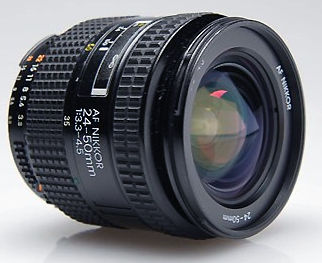 |
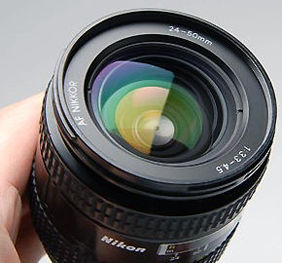 |
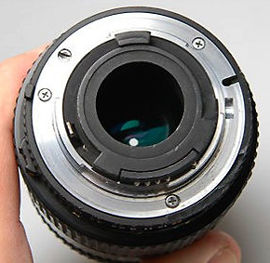 |
Credit: Image courtesy of Jeff@photocreative ® where Jeff's Company PHOTO CREATIVE INC> has a very popular EBAY STORE on its own. Tel: (905) 629-0100 Image copyright © 2006. All rights reserved. Please respect the visual property of the contributing photographer.
Optically, it has a 9 elements in 9 group design and claimed to be well corrected for some common aberration found in such lens type. The closest marked focusing distance of this AF Zoom Nikkor 24-50mm f/3.3~4.5S is 0.6m. It yields a reproduction ratio of approx.10.6 (normal@ 50mm) but there is an orange index for MACRO which extends from there onwards, the maximum reproduction ratio is approx. 1:8.5 maximum @0.5m at 50mm setting. However, the close-up works on all focal length with variable performance. Anyway, the close-up feature is a so-so range but it does provides an option should you need it for some photographic effects. When using the lens on a 1.5X DX format digital SLR, the lens will replicate as a 36-75mm zoom lens.
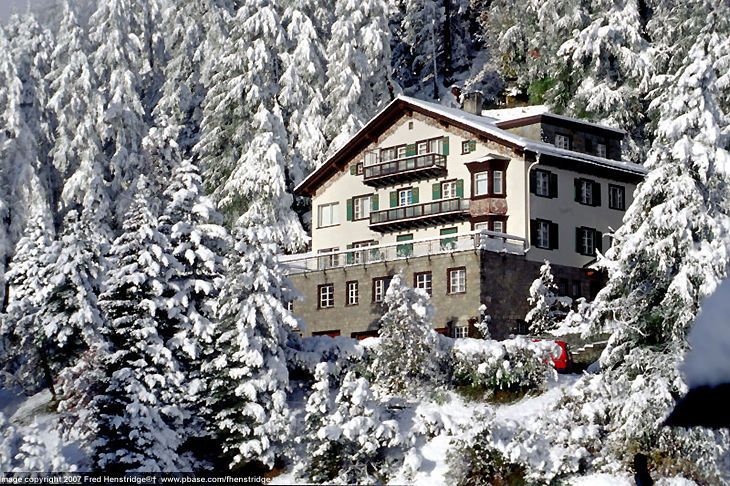 |
A winter in St. Moritz-Hedi House, Switzerland |
Nikon Autofocus
(AF) Zoom Nikkor
24-50mm f/3.3~4.5s
ultra wideangle-standard zoom lens
Marketed 1995; Discontinued: 2006
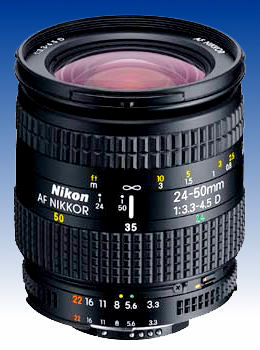 |
The AF-D version of the Autofocus Nikkor 24-50mm f/3.3~4.5D was released towards end of 1995. Basically, an addition of a distance sensor was added to the lens to enable it to supplement with all those Nikon AF SLR cameras produced after 1992 that first offered capability to take into account of subject focus distance for exposure calculation. The enhanced multi segment metering system, first pioneered by the manual focus Nikon FA of 1983 was called AMP (automatic Multi Patterns) and it has been well accepted as a main stream metering system for all major autofocus 35mm SLR labels, but Nikon has kept improving their original innovation and began with the (Nikon F90(s) / N90(x), the Matrix Meter has started to evolve and even included included distance information as part of exposure calculation. The 3D Matrix Metering System also works as 3D Flash Matrix Metering as well. A distance chip embodied AF Nikkor lenses will enhance performance of parallel development of functions offer in a latest Nikon AF SLR cameras (regardless of film or digital based), which include those which offer Color Matrix Metering System. |
However, Nikon did took the opportunity of this lens update to make a few modifications. The most noticeable feature is the change of a slide switch minimum aperture lock from the original twisted knob design. But despite this minor alternation, the lens has seemingly underwent some other changes which may be more to choice of material used internal as well as externally. The optical train of the updated version is identical with the older model. The AF-D version actually weighs lighter as well as slightly more compact than the predecessor Where it measures 67.5mm x 74.1mm as compared to the previous Ai-S model which weighs 70.5mm dia. x 73.5mm; where the weight has been reduced to approx. 355g for the AF-D version from 375g as found on the Ai-S non-D version. Where the weight has been trimmed ? I don't know. One way or another, I felt the new lens has a less rigid feel as compared to the original Ai-S version. But in terms of overall system compatibility, the latter excels in other aspects and should always be given priority as your purchase consideration if you intend to invest into a Nikon cameras in the near future.
 |
A busy pork market in Shantao China. |
Except for
the slow lens speed which may require some form of compensation via use of faster
film type or using a higher ASA setting on digital SLR cameras. This is a very friendly
zoom lens to use with any of the Nikon with a minimum Ai-spec - regardless of auto
or manual focus models. Lens handling is superb. Optically it didn't disappoint either
where images taken consistently exhibits high contrast and sharp resolution - except
for the extreme end of the ultrawideangle range shooting at close up with larger
apertures. This is not a big issue and simply can be equalized by stopping down a
few f-stop and should improve the performance considerably. Considering the versatility
factor as well as in other areas such as portability, it should be an ideal companion
lens to a telephoto zoom lens (or simply just a prime telephoto lens) for wide to
standard picture angle shooting range. Its applications can be very extensive such
as indoor studio. scenic, travel, news/press, journalism, general PR photography
and even for creative portraits etc. I guess how it will be used depends a lot on
how creative are you with your mind with such a lens in your hand as wideangle photography
can be more difficult to master than telephoto which can easily deliver some eyes
arresting images. The AF-Zoom Nikkor 25-40mm f/3.3~4.5 lens group has a rather very
long product cycle from 1987-2006, despite Nikon has released a hot selling AF
Zoom Nikkor 24-120mm f/3.5~5.6 IF
in 1996 which extends the telephoto range to a very usable 120mm. Amidst all the
other interesting lens development on AF Nikkor wide-telephoto lenses, the AF-Zoom
Nikkor 25-40mm f/3.3~4.5D somehow has survived until 2006, it must has its appealing
factor and should always be respected as a good Nikkor zoom lens on its own as not
many other AF Nikkor Zoom lenses can be lasted with such a long surviving state.
![]()
Technical
Specification
for Nikon AF Zoom Nikkor 24-50mm
f/3.3~4.5s / AF
Zoom Nikkor 24-50mm
f/3.3~4.5D wide-standard zoom lens:-
Type of lense: Autofocus Nikkor zoom lens with built-in CPU and a metal rear
Nikon bayonet mount
Focal length: 24mm to 50mm (approx. 36-75mm for Nikon DX format Digital SLR
camera); Maximum aperture: f/3.3; Minimum Aperture: f/22
Lens construction: 9
elements in 9 groups;
with close focus design
Picture angle: 84°
(24mm) - 46°
(50mm)
Focal
length scale: 24mm, 35mm and 50mm
(engraved on zoom ring)
Diaphragm: Fully automatic,
Focus
control: Autofocus, manual focus via manual focusing ring
Zoom control: Via rotating zoom ring
Distance scale: Graduated in meters and feet/inches from 0.6m at normal focus
to infinity (OO); close focuses at its nearest distance at 0.5m at MACRO mode
Distance information: Output into camera body with CPU interface system IS NOT POSSIBLE with the early Ai-S
lens but FULLY
FUNCTIONAL
with AF-D version
Aperture scale: f/3.3,
f/5.6, f/8, f/11, f/16 and 22 on
both standard and aperture-direct-readout scales
Mount: Metal Nikon bayonet mount with CPU contacts;
Attachment size: 62mm (P=0.75mm); Meter Coupling Prong: NONE
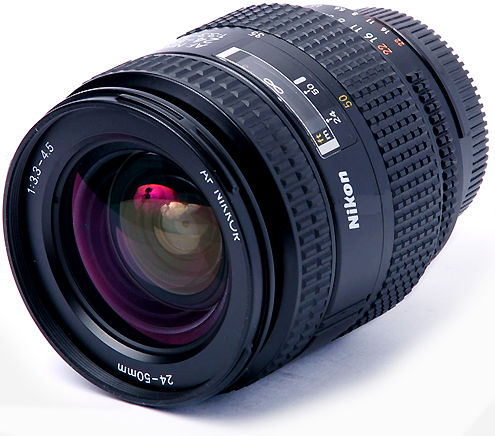 |
Depth of Field Scales: NONE |
Infrared compensation index: Two. Provided for the 24mm and 50m focal length settings
Standard accessories: 62mm front lens cap; Rear lens cap LF-1; Original hard lens case CL-32S; CL-17 usable
Optional Accessories: 62mm screw-in filters; Bayonet hood HB-3 *; Flexible lens pouch No.62. CP 9 may also be possible
Others: Polarizer II Possible even with HB-3 attached. AF-3 Possible (0); AF-4: Possible (0).
Dimensions: Approx. 70.5mm dia. x 73.5mm (Ai-S); 67.5mm x 74.1mm (AF-D)
Weight: Approx. 375g (Ai-S); 355g (AF-D)
Usable Tele-Converters: - TC-200/201S; TC-14A (Note: MANUAL focus only); Nikon does not encourage the use of early AF Teleconverter TC-16S with this AF zoom lens.
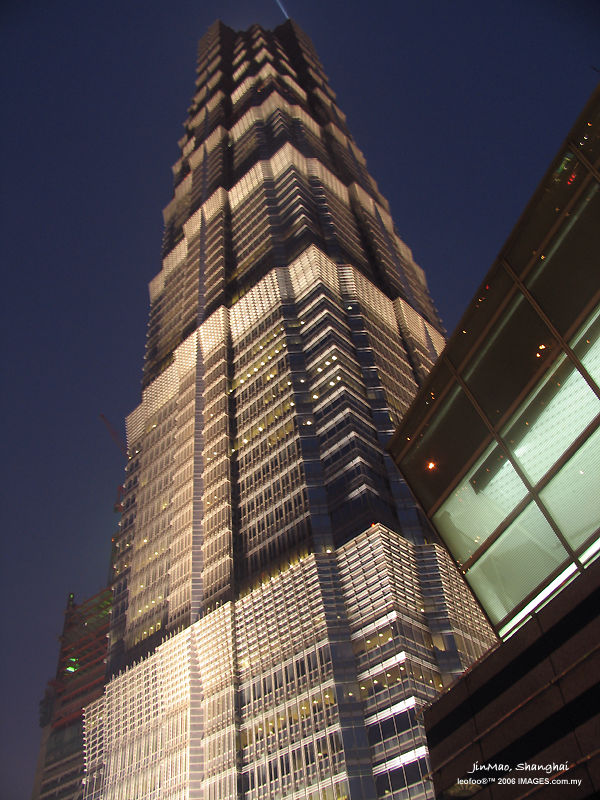 |
As of 2007, the tallest building in China, Jin Mao Tower, Shanghai. |
* Other information:
A.
Be careful not to soil or damage the CPU contacts. Do not attach the following accessories
to the lens, as they might damage the lens' CPU contacts: Auto Extension Ring PK-1,
Auto Extension Ring PK-11*, K1 Ring, Auto Ring BR-4**. Other accessories may not
be suitable for use with certain cameras. This lens cannot be used with AF Finder
DX-1 attached to the Nikon F3AF camera. * Use PK-11A
instead. **Use BR-6 instead; B.
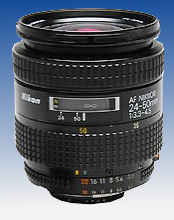 |
|
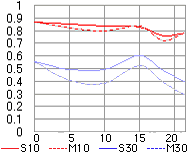 |
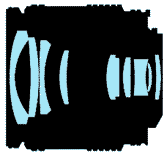 |
Startup Serial Number for the Nikon AF Zoom Nikkor
24-50mm f/3.3~4.5S/D lens may have been began from:
AF 24-50/3.3-4.5 focus scale in window 3+ 200001 < 202077 - 274688 > Feb88
- Dec95 74688
AF 24-50/3.3-4.5D focus scale on barrel 3+ 500001 < 503461 - 519025 > Dec95
- 2006 19025 Reference:
Roland Vink's lens data sheet.
Main Index Page - Autofocus Nikkor lenses
| Message Board |
for your
Nikkor
Optics
in a shared environment
| Message Board | Specifically for Dispose or Looking for new/used Nikon/Nikkor photographic equipment
| Nippon Kogaku Rangefinder Resources | Nikon F | Nikon F2 | Nikon F3 | Nikon F4 | Nikon F5 | Nikon F6 | Nikkormat / Nikomat | Nikon FM Series | Nikon FE/ FA | Nikon EM/FG/FG20 | Nikon Digital SLRs | Nikon - Other models |
Nikon MF RF-Nikkor lenses for Rangefinder
cameras:-
Main Index Page
Nikon
Auto Focus Nikkor lenses:- Main Index
Page
Nikon
Manual
Focus
Nikkor lenses:-
Fisheye-Nikkor Lenses - Circular |
Full Frame |
Ultrawides Lenses - 13mm15mm18mm20mm |
Wideangle Lenses - 24mm28mm35mm |
Standard Lenses - 45mm 50mm 58mm | Telephoto Lenses
- 85mm105mm135mm180mm & 200mm |
Super-Telephoto Lenses - 300mm 400mm 500mm 600mm 800mm 1200mm |
 |
Special Application
lenses: Micro-Nikkor Lenses - 50mm~55mm -60mm 85mm -105mm 200mm Micro-Zoom 70-180mm Perspective Control (PC) - 28mm 35mm PC-Micro 85mm Dedicated Lenses for Nikon F3AF: AF 80mm f/2.8 | AF 200mm f/3.5 EDIF Depth of Field Control (DC): 105mm 135mm Medical Nikkor: 120mm 200mm Reflex-Nikkor Lenses - 500mm 1000mm 2000mm Others: Noct Nikkor | OP-Nikkor | UV Nikkor 55mm 105mm | Focusing Units | Bellows-Nikkor 105mm 135mm Nikon Series E Lenses: 28mm35mm50mm100mm135mm | E-Series Zoom lenses: 36~72mm75~150mm70~210mm |
MF Zoom-Nikkor Lenses: 25~50mm | 28~45mm | 28~50mm | 28~85mm | 35~70mm | 36~72mm E | 35~85mm | 35~105mm | 35~135mm | 35~200mm | 43~86mm | 50~135mm | 50~300mm | 70~210mm E | 75~150mm E | 80~200mm | 85~250mm | 100~300mm | 180~600mm | 200~400mm | 200~600mm | 360~1200mm | 1200~1700mm
Tele-Converters: TC-1 | TC-2 | TC-200 | TC-201 | TC-300 | TC-301 | TC-14 | TC-14A | TC-14B | TC-14C | TC-14E | TC-16 | TC-16A | TC-20E
Recommended links to understand more technical details
related to the Nikkor F-mount and production Serial Number:
http://rick_oleson.tripod.com/index-153.html by: my
friend, Rick Oleson
http://www.zi.ku.dk/personal/lhhansen/photo/fmount.htm by: Hansen,
Lars Holst
http://www.mir.com.my/rb/photography/hardwares/nikonfmount/lens2.htm
http://www.photosynthesis.co.nz/nikon/serialno.html
Recommended Reading Reference on Nikon cameras and Nikkor lenses | about this photographic web site
| | Back | Main Index Page of Nikkor Resources | Back | Main Index Page of Pictorial History of Nikon SLRs |
| Home - Photography in Malaysia |
![]()
Credit: To all the good
people who has contributed their own experience, resources or those who are kind
enough granting us permission to use their images appeared in this site Note:certain
content and images appeared in this site were either scanned from official marketing
leaflets, brochures, sales manuals or publications published by Nikon over the years
and/or contribution from surfers who claimed originality of their work for educational
purposes. The creator of the site will not be responsible for may discrepancies arise
from such dispute except rectifying them after verification."Nikon", "Nikkormat", "Nippon Kokagu
KK"
& "Nikkor" are registered
tradename of Nikon Corporation Inc., Japan. Site made with an Apple IMac.
